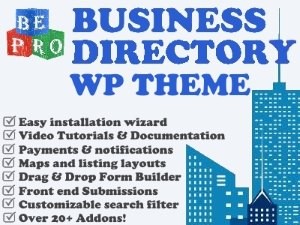
Conversion Rate Optimization (CRO) is essential for any business looking to turn website visitors into customers. Conversion rates are a far better metric for measuring a website’s performance when compared to visitor traffic.
One of the most effective areas to focus on when considering CRO, is the “above the fold” section of a webpage—the portion visible without scrolling. This prime real estate can significantly impact user engagement and conversion rates.
Let’s explore some proven above the fold techniques that can help you optimize your conversion rates and drive more sales or leads.
Table of Contents
- Understanding Above the Fold
- The Importance of First Impressions
- Effective Headline Strategies
- Compelling Call-to-Action (CTA)
- Utilizing Visual Elements
- Optimizing for Mobile
- A/B Testing Above the Fold
- Case Studies: Success Stories
- Key Takeaways for CRO
Understanding Above the Fold
The term “above the fold” originates from newspaper printing, where the most critical stories were placed on the upper half of the front page, ensuring they were visible when the paper was folded.
In web design, above the fold refers to the part of a webpage that is visible without scrolling. Optimizing this space is crucial because it’s your first opportunity to engage visitors.
-
Why It Matters: The above the fold area is the first thing visitors see when they land on your site. It’s your chance to make a strong first impression, communicate value, and encourage them to stay longer. Research shows that users spend 57% of their viewing time above the fold, making it a critical area for CRO.
-
Common Mistakes: Overcrowding this space with too much information, using poor-quality images, or neglecting mobile optimization can lead to high bounce rates. It’s important to strike a balance between aesthetics and functionality.
The Importance of First Impressions
Your website’s above the fold area is where first impressions are formed. Studies show that users decide whether to stay or leave a website within the first few seconds.
Therefore, the content and design elements in this section must immediately convey value and relevance to the visitor.
-
Psychological Impact: The first few seconds on your website can create a lasting psychological impact on visitors. A clean, professional design with a clear message can foster trust and credibility, which are essential for conversions.
-
Key Elements to Include: To make a positive first impression, consider including a headline that speaks directly to the user’s needs, a visually appealing hero image, and a clear value proposition. These elements should work together to immediately communicate what your brand offers and why it’s relevant to the user.
Effective Headline Strategies
A powerful headline is the cornerstone of your above the fold content. It should be clear, concise, and compelling. Use action words and address the user’s pain points or desires. Personalization, such as using the visitor’s name or location, can also boost engagement.
-
Clarity and Brevity: Your headline should be easily understood within seconds. Avoid jargon and ensure that it directly addresses the problem your product or service solves. A headline that’s too long or complex can confuse visitors and lead them to bounce.
-
Examples of Strong Headlines: For instance, instead of saying “Welcome to Our Website,” a stronger headline would be “Get Faster Results with Our Proven Marketing Strategies.” This version is clear, benefit-focused, and encourages the visitor to explore further.
-
Incorporating Keywords: While your headline needs to be user-focused, incorporating relevant keywords can also help with SEO, ensuring that your page ranks well in search engine results.
Compelling Call-to-Action (CTA)
The CTA is the driving force behind conversions. Place a prominent and persuasive CTA above the fold to guide users towards your desired action.
Use contrasting colors, urgent language, and create a sense of scarcity to encourage clicks. Testing different CTA placements and wording can also lead to higher conversion rates.
-
Placement and Visibility: Your CTA should be one of the first things a visitor sees. It should stand out visually, often through the use of contrasting colors, and be placed in a location where the visitor’s eye naturally travels.
-
Wording and Urgency: The language of your CTA should be action-oriented and create a sense of urgency. Phrases like “Get Started Now,” “Claim Your Free Trial,” or “Shop Today” are more effective than generic options like “Submit” or “Click Here.”
-
Reducing Friction: Minimize the number of steps required for the user to complete the action. For example, if your goal is to collect email subscriptions, a simple form with minimal fields (e.g., just an email address) will likely convert better than a long form with multiple fields.
Utilizing Visual Elements
Visuals can significantly enhance the effectiveness of your above the fold content. High-quality images, videos, or infographics can convey your message quickly and effectively.
Ensure that these visuals are relevant to your offer and help to reinforce your CTA. Additionally, they should be optimized for fast loading times to avoid slowing down your page.
-
Types of Visuals: Depending on your business, different types of visuals can be more effective. A SaaS company might benefit from a demo video, while an eCommerce site might use high-quality images of their products. Infographics can also be useful for summarizing complex information quickly.
-
Hero Images and Videos: A hero image or video can serve as a powerful backdrop for your headline and CTA. This visual should be relevant, high-resolution, and should not detract from the text or other elements on the page.
-
Loading Speed and Optimization: Ensure that all images and videos are optimized for quick loading. Slow loading times can lead to high bounce rates, especially on mobile devices. Tools like image compression and content delivery networks (CDNs) can help improve performance.
Optimizing for Mobile
With mobile traffic surpassing desktop, it’s crucial to optimize your above the fold content for mobile devices. This involves ensuring that all elements, including headlines, images, and CTAs, are easily accessible and visible on smaller screens.
Mobile-first design principles, such as responsive layouts and larger clickable areas, can improve the user experience and boost conversions.
-
Responsive Design: Your website should be fully responsive, meaning that it adapts to different screen sizes without sacrificing usability. This includes ensuring that text is legible, images scale correctly, and CTAs are easily clickable on small screens.
-
Simplification for Mobile: Mobile users often have less patience and may be looking for quick answers. Simplifying your above the fold content, possibly by reducing the amount of text or focusing on a single CTA, can help keep mobile visitors engaged.
-
Testing on Multiple Devices: Test your site across various devices and screen sizes to ensure a consistent experience. Tools like Google’s Mobile-Friendly Test can help identify areas for improvement.
A/B Testing Above the Fold
Continuous testing is key to successful CRO. A/B testing different versions of your above the fold content allows you to determine what works best for your audience. Test various headlines, CTAs, images, and layouts to find the combination that yields the highest conversion rates.
-
What to Test: Start by testing the elements that have the most impact, such as the headline, CTA, and hero image. You can also experiment with different layouts, such as placing the CTA button in different locations.
-
Analyzing Results: Use tools like Google Optimize, Optimizely, or VWO to conduct your A/B tests. It’s important to run tests long enough to gather statistically significant data. Analyze the results to determine which version performs better and implement the winning variation.
-
Iterative Testing: A/B testing is not a one-time activity. As your audience evolves and your business grows, continuous testing is necessary to ensure your above the fold content remains effective.
Case Studies: Success Stories
Explore case studies of businesses that have successfully optimized their above the fold content. Learn from their strategies and apply these insights to your own website. Real-world examples can provide valuable lessons and inspiration for your CRO efforts.
-
Case Study 1: Airbnb: Airbnb tested various headline and image combinations above the fold, eventually settling on a design that emphasized trust and security. This led to a significant increase in sign-ups, showing the power of focusing on user concerns right from the start.
-
Case Study 2: Dropbox: Dropbox used a simple, clean design with a clear CTA above the fold, resulting in a 10% increase in conversions. Their success highlights the importance of simplicity and clarity in the above the fold area.
-
Case Study 3: Crazy Egg: Crazy Egg implemented heat maps to understand user behavior and then optimized their above the fold content by moving the CTA button and simplifying the text. This led to a 20% increase in conversions, demonstrating the value of data-driven decisions.
Key Takeaways for CRO
- First Impressions Matter: Your above the fold content is critical for capturing and retaining visitor attention.
- Headline & CTA are Key: Focus on creating compelling headlines and strong CTAs.
- Visuals Enhance Engagement: Use relevant and optimized visuals to support your message.
- Mobile Optimization is Crucial: Ensure your above the fold content is mobile-friendly.
- Test & Refine Continuously: A/B testing is essential for optimizing conversion rates.
Conclusion
Optimizing the above the fold area of your website is a proven strategy for improving conversion rates. By focusing on effective headlines, persuasive CTAs, engaging visuals, and mobile optimization, you can create a powerful first impression that drives user action.
Continuous testing and learning from successful case studies will further enhance your CRO efforts, leading to better business outcomes.


